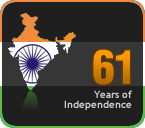I’ll narrate another story told by Sri Rama Krishna Param Hamsa in the same context of belief. I read this in Sri Rama Krishna Bodhamrutham.
అనగా అనగా..........
Once there was an innocent man in a village. One day on some work, he was going to the nearby village. On the way, he had to cross a small river. He feared to cross the river. There came a Saint. This innocent man prayed the Saint to help him to cross the river. The Saint had given a ‘Thaveedu’ i.e. a copper thin sheet on which a magic word would be written and folded in to small size and said “My dear boy, Hold this Thaveedu in your hand and chant, ‘Sri Rama….Sri Rama…’ and cross the river. You can swim in the water”.
The innocent man thanked the Saint and the Saint went on his way. The innocent man started to chant, ‘Sri Rama….Sri Rama’, wonder! He was able to swim in water. He was so happy. When he crossed half of the width of the river, he got curiosity to see what was the magic word, written on the ‘Thaveedu! Then he opened the copper sheet. There was written Sri Rama. When he read it, he thought “Only Sri Rama! Not any magic word.”
By the moment itself, he sank in the water.
That’s the entire story.
In this story, the innocent man didn’t sink in the water until he had belief on ‘Thaveedu’ and chanting of Sri Rama’s name. Whenever he got doubt on it, he sank in the water. We used to have similar experiences in our life. Whenever we loss trust on God or whenever we loss self-confidence we used to fail in our effort.
Being Hindus, we believe that self-confidence is confidence on God. అహంబ్రహ్మస్మిః As living beings, we are Atma and the God is Paramatma. God is in us and we are in God. Sri Bhagavad Geetha clearly tells us this.
I want to narrate another reference of Sri Rama Krishna Param hamsa. This also, I read in Sri Rama Krishna Bhodhamrutham. As per that,
In Sri Ramayana, Sri Anjeneya had jumped over the 100 Yojanas distance ocean to reach Sri Lanka, by trusting on the Name of Sri Rama. But Sri Rama himself needed the bridge to cross the ocean. That is the power of belief. The devotee can do miracles by trusting in God, where as God, he needs devotees to establish this.
Indian culture, Indian life style, Indian epics make the people to trust in righteous and to believe in morality. By demolishing this Indian culture, Indian life style, and Indian epics, the coup makers made the people and still making the people to trust in bad, to believe in immorality. All our epics motivate the people to be with positive thinking. By destroying the epics, by criticizing the epics, by making jokes on the epics, the coup makers, i.e. C.I.A., I.S.I. and Mr. Ramoji Rao successfully motivated the Indian to be with negative thinking.
I’ll explain it in detail.
There is a famous story of the king Harithschandra in Sri Ramayana. He was famous as Satya Harithschandra. To avoid saying lie, he sacrificed his kingdom, his wealth, wife, his son, his life and himself. He didn’t melobon to say lie, even, when he received the dead body of his own son. He got ready to cut his wife’s head to perform his duty. In any difficulties, at any time he didn’t give up the nature of telling truth. This story motivated Mohan Gandhi to turn as Mahatma Gandhi. People used to get motivation and spirits from epics to practice truthful life, to tell truth always. In Sri Rama Navami and other festival celebrations time, I watched that villagers and all sections of people used to get mesmerized while watching the poetic Drama of Satya Harichandra.
On such epic story, in between the years 1975 to 1992, pakka propaganda had implemented by the coup makers. In movies, in weeklies, in literature and in other related programs, a joke had popularized as follows:
Teacher: Children! What do you understand by the story of Satya HarithsChandra?
Children: we have to face many difficulties by saying truth.
Or
Father: Dear Ramu! What did you know by the story of Satya HarithsChandra?
Son: It is better to avoid telling truth. Otherwise, we have to face many problems.
The same joke in different forms was on propaganda until it reached to all sections of the people.
No journal of any media companies had published, no Columnist, no Journalist had written a single essay that, because HarithsChandra told truth, he was still alive in our hearts as Satya HarithsChandra. No intellectual like the one Kula Deep Nayyar, or A.G. Noorani or Nakkeeran Gopalan or N.Ram or Rama Chandra Guha etc. etc. had presented an argument, as there were thousands of kings lived and died, among them Hari Chandra only had given guidance to us.
THE STORY TOLD BY MOUNA BHASHINI’S PAYYEDA,
16 years ago




